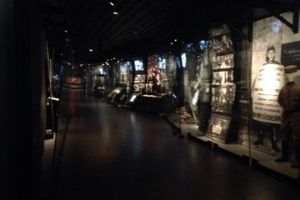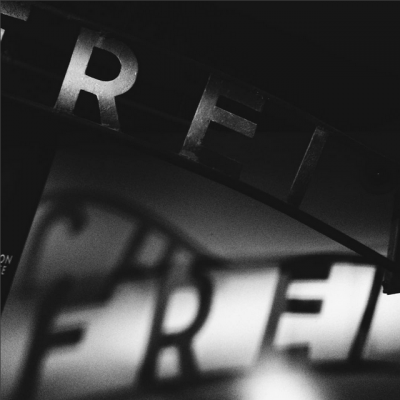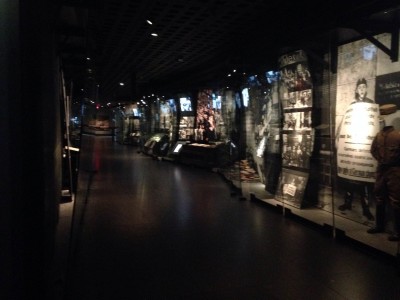Three Days Later and This is What I Learned

A blog post by Education Intern Eden Cho. To read more posts by interns click HERE.
Yesterday afternoon, Rachel Kassman (Development and Marketing, Intern Wrangler, and Official Candy Provider), asked me to write a final blog about the Summer Teachers Institute (STI) that occurred a few days ago. In a nutshell, the STI is an annual workshop that provides educators the tools and resources to teach the Holocaust to their own students. The topic changes, and this year, the focus was on Auschwitz. I helped prepare for it by doing administrative tasks such as making copies and folders for each participant, but this is really our Deputy Director, Deborah Cardin’s baby.

In the last 24 hours, I began thinking about all the things I could ramble about and decided to keep the spotlight on the purpose of this workshop: the educators and their students. One of my post-STI duties was to go through the teacher evaluations and analyze the results. The evaluation was in the form of a survey broken down by each session with attendees marking a 1 for the lowest score to a 4 for the highest score. Here are some statistics for you:
*100% of the participants gave Louise Géczy, the Senior Project Coordinator at The John Carroll School, the highest score citing her presentation to be “valuable” and “eye-opening.”
*100% of the participants gave the highest score in their overall experience at the United States Holocaust Memorial Museum (USHMM) and the tour of their permanent exhibit.
*95% of the participants gave the two highest marks (3 or 4) on all the sessions on the first day, 92% of the participants gave the two highest marks on all the sessions on the second day, and 89% of the participants gave the two highest marks on all the sessions on the last day.
*When responding to survivor testimonies and what participants saw at the USHMM, the words “powerful,” “moving,” and “touching” were commonly used.
*When responding to speakers, the words “informative,” “knowledgeable,” and adjectives such as “wonderful” and “fascinating” were commonly used.

To end this blog post, here’s a short anecdote for you:
On the second day of STI, the location of the workshop was being held at the USHMM. STI provided buses at two stops, but I chose to meet the group at the museum since I would be staying in DC after. On that particular morning, I either forgot to set my alarm or slept through it, waking up late and scrambling out of my house. By the time I arrived two hours late sweating, and rushing through the metal detector, a very nice security officer pulls me aside and simply states he needs to do a random inspection. Instinctively, I start opening my purse, but he says it’s not necessary. Instead, he grabs a special piece of paper, rubs it on my red Rebecca Minkoff, and feeds it through a machine.
“Can I ask what that does?” I ask timidly.
“It checks your bag for explosive residues, which yours does not have,” he says as he’s reading the results.
I don’t think much of it as I hurriedly searched for Deborah in the lobby. During lunch, I tell the other interns about what happened, knowing I feel something but unsure of what that emotion exactly is. Someone jokes, “It’s because you’re Asian! None of us got randomly inspected.” But what I felt wasn’t a race issue- I’m used to being stereotyped. As the interns approached the main entrance of the museum to re-enter after lunch, I notice two security or police officers walking around outside and three more managing the security inside. That’s when I knew what that feeling was.

In all of the museums I’ve visited, none has a tighter security than the USHMM. I felt such sadness and disheartenment that this place of education and living memorial has to be strict in security due to antisemitism that still occurs today, 70 years after the end of World War II. At the same time, I felt hopeful that I was attending a workshop with dedicated and passionate educators who were spending three days out of their summer vacation to learn how to better teach their students.
So, to Rev. Robert Albright, Judith Cohen, Louise Géczy, Dr. Lauren Granite, Josh Headley, Heller Kreshtool, Shiri Sandler, Rabbi Josh Snyder, Joseph White, and every single educator who attended at least one day of this year’s STI: thank you, thank you, thank you, for loving our younger generation. To me, you’re not just teaching about the pain and atrocity that occurred years ago, but you’re fighting antisemitism, and teaching kids how to be compassionate and kindhearted.
For other educators who could not join us this year, here are some resources from this year’s Summer Teachers Institute:
- Centropa: Where Jewish history has a name, a face, a story
- USHMM: Resources for Educators
- Museum of Jewish Heritage: A Living Memorial to the Holocaust
Graphic Novels recommended by Josh Headley:
- Maus by Art Spiegelman
- Moving Pictures by Kathryn and Stuart Immonen
- Safe Area Gorazde by Joe Sacco
- Palestine by Joe Sacco
- Jerusalem by Boaz Yakin and Nick Bertozzi
- Zahra’s Paradise by Amir and Khalil
- Hidden: A Child’s Story of the Holocaust by Loic Dauvillier, Greg Salsedo, and Marc Lizano
- Mike’s Place: A True Story of Love, Blues, and Terror in Tel Aviv by Jack Baxter, Joshua Faudem, and Koren Shadmi
